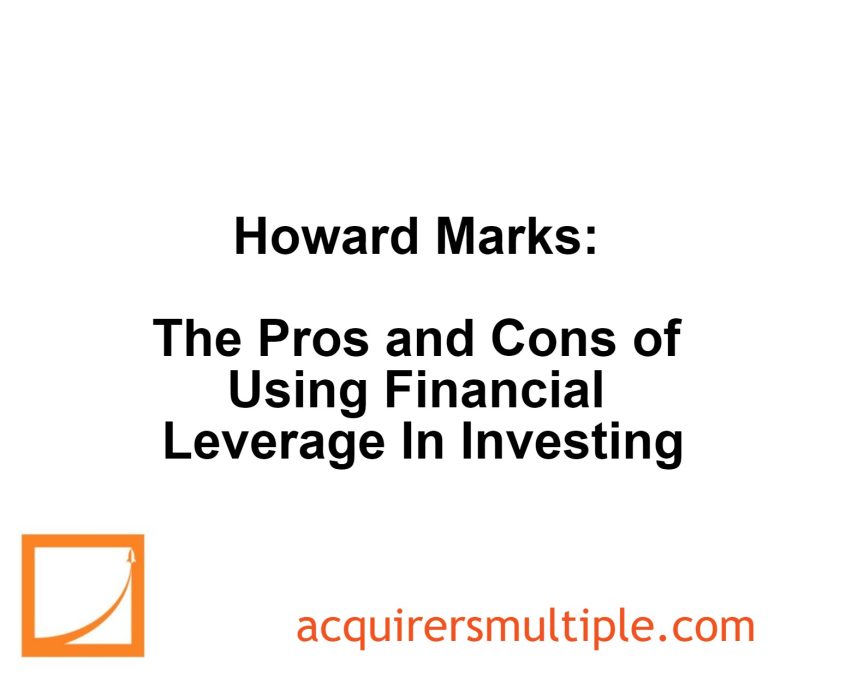In his latest memo titled – The Impact of Debt, Howard Marks explains that leveraging debt is used to increase capital efficiency because debt is generally cheaper than equity, allowing greater asset ownership and potential profits when conditions are favorable.
However, he warns that leverage also amplifies losses similarly when conditions are unfavorable. Leverage introduces risks such as the risk of ruin, particularly during market downturns, where volatility can exacerbate the impact.
Lenders might withdraw credit, investors could pull out, and regulatory breaches may force asset sales. Marks highlights the critical lesson that leverage can drown even the capable if they fail to navigate the lows, emphasizing the need for careful risk management in leveraged investments.
Here’s an excerpt from the memo:
The reason for taking on debt – i.e., using what investors call “leverage” – is simple: to increase so-called capital efficiency. Debt capital is usually cheap relative to the expected returns that motivate equity investments and thus relative to the imputed cost of equity capital.
Thus, it’s efficient to use it in lieu of equity. In casinos, I’ve heard the pit boss say, “The more you bet, the more you win when you win.” Likewise, for a given amount of equity capital, (a) the more debt capital you use, the more assets you can own and (b) the more assets you own, the greater your profits will be . . . when things go well.
But few people talk about the downside. The pit boss never says, “. . . and the more you lose when you lose.” Likewise, when your assets decline in value, the more leverage you’ve employed, the more equity loss you’ll suffer.
The magnification of gains and losses stemming from leverage is typically symmetrical: a given amount of leverage amplifies gains and losses similarly. But levered portfolios face a downside risk to which there isn’t a corresponding upside: the risk of ruin.
The most important adage regarding leverage reminds us to “never forget the six-foot-tall person who drowned crossing the stream that was five feet deep on average.” To survive, you have to get through the low points, and the more leverage you carry (everything else being equal), the less likely you are to do so.
. . . it’s important to recognize the role of volatility. Even if losses aren’t permanent, a downward fluctuation can bring risk of ruin if a portfolio is highly leveraged and (a) the lenders can cut off credit, (b) investors can be frightened into withdrawing their equity, or (c) the violation of regulatory or contractual standards can trigger forced selling.
You can read the entire memo here:
Howard Marks Memo – The Impact of Debt
For all the latest news and podcasts, join our free newsletter here.
Don’t forget to check out our FREE Large Cap 1000 – Stock Screener, here at The Acquirer’s Multiple:



